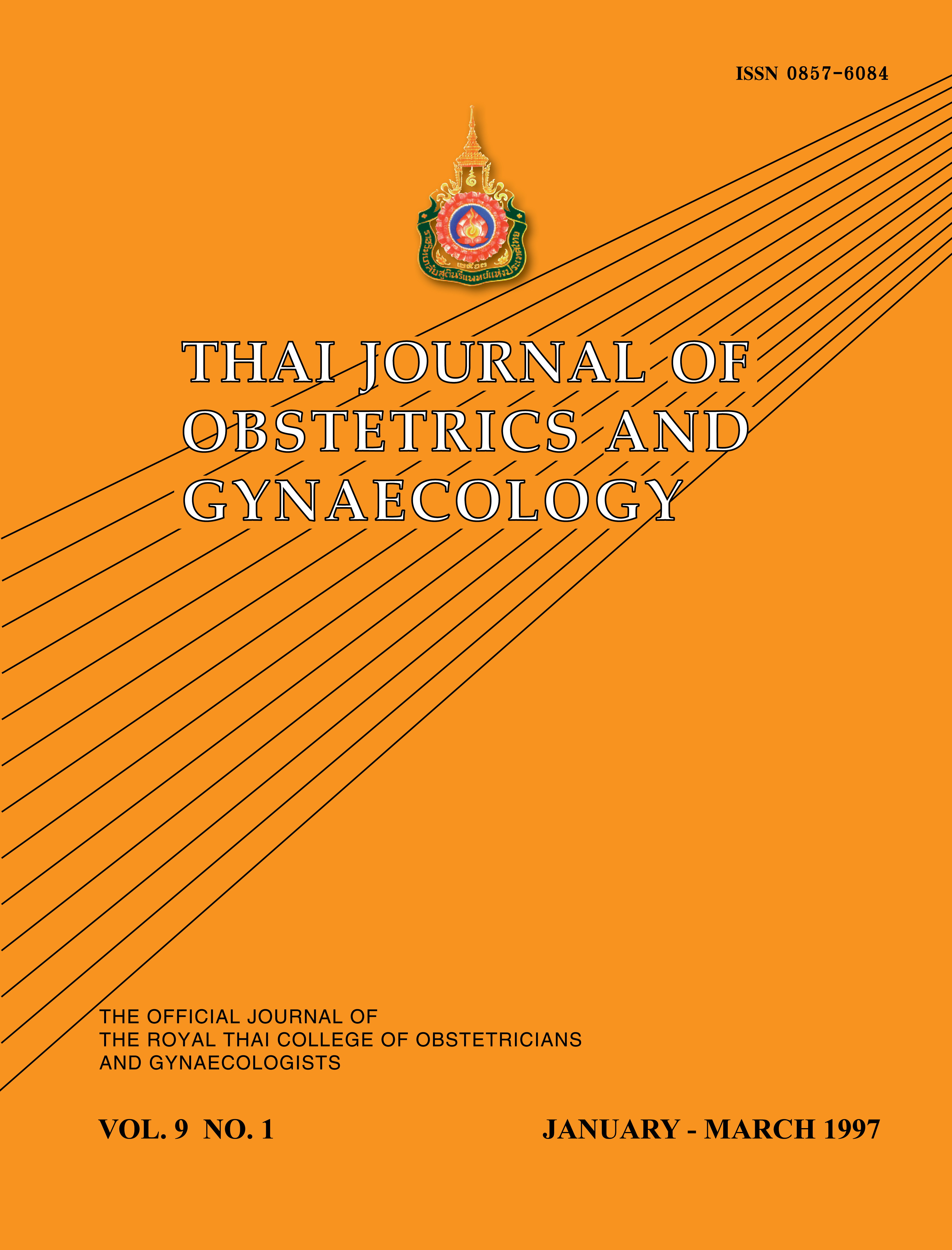Detection of Chlamydia trachomatis by the Polymerase Chain Reaction in the Cervices of Women with Pelvic Inflammatory Disease
Main Article Content
Abstract
Objective 1. To determine the clinical features and the prevalence of Chlamydia trachomatis in women with pelvic inflammatory disease, and 2. To assess the association between intrauterine contraceptive device use and the prevalence of Chlamydia trachomatis. Design A prospective, observational study. Setting Guangzhou Maternal and Neonatal Hospital, Guangdong, China.
Subjects and methods Endocervical samples from 85 women with pelvic inflammatory disease were tested for Chlamydia trachomatis, by the polymerase chain reaction and enzyme immunoassay.
Results Eighty-five patients with pelvic inflammatory disease were verified at laparoscopy or pathology. Thirty women had evidence of pelvic adhesions. Chlamydia trachomatis was detected in the cervices of women with pelvic inflammatory disease in 45 of 85 patients (52.9%) by the polymerase chain reaction, 27 of 78 (34.6%) by the enzyme immunoassay. Only 15 of these women (19.2%), of whom had positive results when tested with the polymerase chain reaction, had enzyme immunoassay that were positive for Chlamydia trachomatis. Chlamydia trachomatis was identified in the genital tract in 22 of 45 women (48.9%) with intrauterine contraceptive devices and 23 of 45 women (51.1%) not using contraceptive methods (P >0.05).
Conclusion The polymerase chain reaction appeared to be more sensitive than enzyme immunoassay in detecting Chlamydia trachomatis in the cervices of women with pelvic inflammatory disease. This study suggests that early laparoscopy in hospitalised women improves diagnostic precision and provides information for future fertility. Our findings support that chlamydia-infected intrauterine contraceptive device users are not at increased risk for pelvic inflammatory disease.
Article Details

This work is licensed under a Creative Commons Attribution-NonCommercial-NoDerivatives 4.0 International License.


